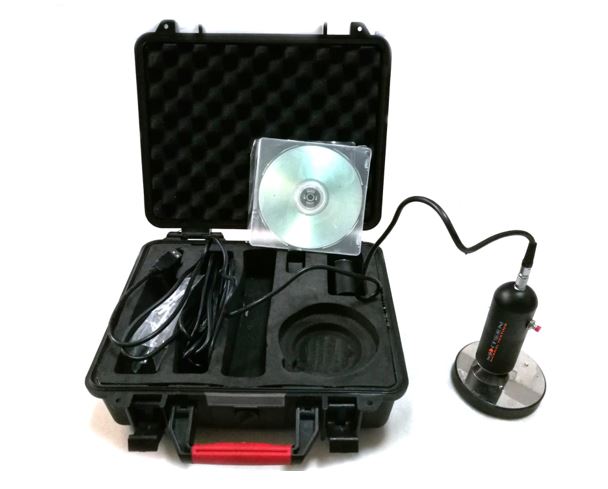Exploring Closed-Loop Brain-Machine Interfaces for Brain State Control
In recent years, advancements in neuroscience and technology have led to groundbreaking innovations in brain-machine interfaces (BMIs). Among these, closed-loop BMIs hold immense promise in controlling and modulating brain states, enabling applications that extend from medical therapies to enhancing cognitive functions. Closed-loop systems represent a powerful approach, continuously monitoring brain activity and adjusting output in real time. This capability not only enhances our understanding of brain dynamics but also opens pathways to interventions for conditions such as epilepsy, depression, and neurodegenerative disorders.
Welcome to the NeuroControl Lab at the University of Central Florida (UCF)! Our lab focuses on designing and refining closed-loop brain-machine interfaces that offer fine-tuned control over various brain states. By tapping into the potential of these innovative systems, researchers hope to develop methods to aid those with neurological conditions and to improve brain function in everyday applications.
What are Brain-Machine Interfaces (BMIs)?
Brain-machine interfaces (BMIs) are systems that facilitate direct communication between the brain and external devices. The basic premise of a BMI is to capture neural signals—usually through electrodes placed on or near the brain’s surface—and then use these signals to control external devices, like prosthetic limbs, or to provide sensory feedback. BMIs are currently being developed for a variety of applications, including aiding people with mobility issues, restoring sensory functions, and even enhancing cognitive abilities.
Closed-loop BMIs differ from open-loop systems by incorporating feedback mechanisms. In open-loop BMIs, signals are sent one-way, from the brain to the machine or vice versa, without any real-time monitoring or adjustment. In a closed-loop BMI, the system continually monitors brain activity and adapts based on that information, creating a dynamic two-way communication loop that can adjust to changes in brain state.
How Closed-Loop BMIs Work
Closed-loop BMIs consist of three core components:
- Signal Acquisition: Sensors capture brain signals, often through electrodes placed on the scalp (non-invasive) or directly on the brain (invasive).
- Signal Processing and Analysis: These signals are processed to identify specific patterns of neural activity. Advanced algorithms analyze this data, which can indicate a particular brain state or change.
- Real-Time Feedback and Adjustment: Based on the analysis, the BMI sends feedback to influence brain activity, closing the loop by continuously monitoring and adjusting the brain state.
This feedback loop can provide real-time stimulation to the brain, allowing the system to modulate brain states effectively. For example, if a BMI detects an increase in neural activity related to a seizure, it can automatically deliver targeted stimulation to prevent the seizure from occurring. This type of intervention can be transformative for individuals with epilepsy, offering a proactive approach to seizure management.
Applications of Closed-Loop BMIs for Brain State Control
Closed-loop BMIs have a wide array of applications, each with promising potential to improve lives and enhance cognitive function. Below are some key areas where these systems are being explored:
1. Epilepsy Management
For people with epilepsy, closed-loop BMIs provide a proactive solution to prevent seizures. These systems can detect early signs of a seizure through changes in neural activity and deliver electrical stimulation to suppress it. This real-time intervention may reduce the frequency and severity of seizures, improving quality of life for many individuals. Such BMIs are also beneficial for patients who do not respond well to medication, offering an alternative and potentially life-changing treatment option.
2. Mood and Mental Health Regulation
Mood disorders, such as depression and anxiety, often involve dysregulated brain states. Closed-loop BMIs are being developed to modulate these states, potentially offering relief where traditional treatments fall short. For instance, deep brain stimulation (DBS), a technique that delivers targeted electrical pulses, has shown promise in alleviating severe depression. When combined with closed-loop systems, DBS can be even more effective, adjusting the stimulation based on the brain’s real-time response and thus ensuring optimal levels for the individual.
3. Neurodegenerative Disease Management
Neurodegenerative diseases, like Parkinson’s and Alzheimer’s, involve progressive deterioration of neural circuits. Closed-loop BMIs are being explored as a way to help stabilize brain function, slow down cognitive decline, and alleviate symptoms such as tremors and motor impairments. By using real-time feedback, these BMIs can deliver precise stimulation tailored to the patient’s specific needs, making treatments more effective and reducing side effects.
4. Enhancing Cognitive Performance
Beyond medical applications, closed-loop BMIs are also being investigated for their potential to enhance cognitive functions in healthy individuals. By fine-tuning brain states associated with focus, memory, and learning, these systems may one day be used to improve productivity, mental clarity, and other aspects of cognitive performance. For example, researchers are exploring closed-loop systems that stimulate the prefrontal cortex to help with memory consolidation during sleep. Such developments could have profound implications for fields that demand high cognitive function, such as education, athletics, and even space exploration.
Challenges in Developing Closed-Loop BMIs
While closed-loop BMIs hold significant promise, several challenges must be overcome before they can become mainstream. Some of these challenges include:
1. Complexity of Neural Signals
The brain is an incredibly complex organ, and decoding neural signals with high precision remains a significant challenge. While machine learning algorithms have made progress in signal interpretation, accurately identifying specific brain states and corresponding with desired outcomes is still a complex task that requires further research.
2. Ethical and Privacy Concerns
With closed-loop BMIs, the potential to influence brain states raises ethical questions. Ensuring user autonomy, informed consent, and the protection of brain data are critical considerations. Since brain signals are highly personal, concerns around data privacy and misuse must be addressed to foster public trust in these technologies.
3. Technical and Practical Limitations
For closed-loop BMIs to be effective, they need to operate seamlessly and with minimal interference. Developing devices that are compact, durable, and have a long battery life is essential for practical, long-term use. Moreover, balancing the invasiveness of the system with its efficacy is a key challenge, as invasive methods tend to yield more accurate signals but are riskier and more complex to implement.
The Future of Closed-Loop Brain-Machine Interfaces
The future of closed-loop BMIs is filled with potential, especially as technology continues to advance. As machine learning algorithms grow more sophisticated, they will be better able to analyze neural patterns and predict optimal interventions. Additionally, emerging materials and miniaturization techniques are likely to result in devices that are less invasive and more efficient, making BMIs more accessible to a broader population.
Closed-loop BMIs may also pave the way for personalized medicine in neuroscience, where treatments are specifically tailored to an individual’s unique brain patterns and needs. This personalized approach could lead to better outcomes, especially for conditions that have previously been difficult to treat with standard therapies.
For those interested in following the latest research and innovations in this field, resources like yuxiaoyang.org provide valuable insights into the ongoing work within the NeuroControl Lab and similar research institutions. These platforms help keep the scientific community and the public informed about advances that could shape the future of brain-machine interactions.
Conclusion
Exploring closed-loop brain-machine interfaces for brain state control is a journey into the frontier of neuroscience and technology. From managing epilepsy and mood disorders to enhancing cognitive performance, the applications of closed-loop BMIs are as promising as they are diverse. By continuously monitoring and adjusting brain activity, these systems have the potential to transform lives, offering hope for new treatments and expanding our understanding of the human brain.
As we move forward, it’s essential to balance innovation with ethical considerations, ensuring that these technologies benefit individuals and society. The NeuroControl Lab at UCF is dedicated to advancing this research, aiming to unlock the potential of closed-loop BMIs to make brain state control a practical reality. The work at institutions like yuxiaoyang.org showcases the profound impact that collaboration and dedication in this field can achieve, paving the way for a future where brain-machine interfaces are seamlessly integrated into medical care and cognitive enhancement.




